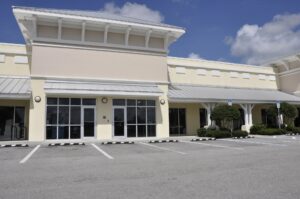Infrared paving, a technology gaining popularity in asphalt repair, utilizes radiant heat to reheat existing pavement material. Contractors offering this service often highlight its benefits – faster installation times, minimal environmental impact, and a seemingly cost-effective solution. However, a deeper dive reveals potential drawbacks that can significantly impact your project in the long run.
Let’s investigate the hidden costs of infrared paving and reveal some crucial information to consider before making a decision.
Life Cycle Cost Analysis: Beyond the Initial Price Tag
The initial price quoted by a contractor might seem attractive, but a more comprehensive approach is necessary for informed decision-making. Life cycle cost analysis (LCCA) is a crucial financial tool that considers all expenses associated with an investment throughout its lifespan, not just the upfront cost. While infrared paving boasts a lower initial price tag compared to traditional methods like complete removal and replacement, potential for increased patching and repairs down the line can significantly impact the total cost of ownership.
For instance, if the infrared process doesn’t achieve proper heating and compaction throughout the entire pavement structure due to weak or uneven subsurface layers, cracks might develop sooner than anticipated. These cracks will require additional patching or even resurfacing, leading to unforeseen expenses. A traditional method, while potentially more expensive upfront, might offer a longer lifespan with less frequent maintenance needs, ultimately leading to lower overall costs. Performing a thorough LCCA that considers the specific condition of your pavement, traffic volume, and desired lifespan will help you determine the most cost-effective approach.
Subsurface Suitability: Not a One-Size-Fits-All Solution
The success of infrared pavement repair hinges on the condition of the subsurface layers. Infrared waves penetrate asphalt, heating the existing material to a specific depth. This method works best when the underlying base – the layers beneath the asphalt surface course – is strong and uniform. However, if the base is weak or uneven, proper heating and compaction throughout the entire pavement structure might not be achieved.
Uneven Heating and Compaction Risks
Uneven heating can lead to weak spots within the pavement. Imagine the asphalt resembling a patchwork quilt, with some areas receiving more heat than others. These cooler areas won’t properly bond with the reheated material, creating vulnerabilities. Over time, these weak spots can develop into cracks that compromise the structural integrity of the pavement.
In addition, improper compaction can result in settlement. Compaction is the process of densifying the pavement material to eliminate air voids and create a solid structure. If the infrared process doesn’t achieve proper compaction throughout the entire pavement thickness, voids can develop within the layers. These voids can act like tiny pockets of weakness, eventually leading to the pavement settling or collapsing under pressure.
Environmental Considerations: A Balanced Approach
While infrared paving is generally considered an environmentally friendly option due to reduced use of new materials like virgin asphalt and aggregate, there are hidden factors to consider.
Infrared heaters require significant amounts of energy to operate. While the environmental impact of this energy consumption might be offset by the reduced use of new asphalt production, a holistic evaluation is necessary. The specific energy source powering the heaters also plays a role. If the energy comes from fossil fuels, the environmental benefit might be diminished.
It’s important to inquire about the type of energy source used to power the infrared heaters during the project. If environmental impact is a major concern, explore options that utilize renewable energy sources like solar or biofuels.
Long-Term Performance Concerns: The Jury is Still Out
Infrared paving is a relatively new technology compared to traditional methods like complete removal and replacement. While it offers promising advantages, the long-term performance of infrared-repaired pavements remains to be definitively established. Traditional methods have a proven track record, with decades of data available to predict their longevity.
Imagine two roads, one repaired with traditional methods and the other with infrared technology. Ten years down the line, the traditionally repaired road might still be performing well, while the infrared-repaired road might be showing signs of premature wear and tear. The lack of long-term data with infrared technology makes it difficult to predict future performance with certainty.
Call Georgia’s Wildcat Pavement for High-Quality Pavement Maintenance and Repairs
At Georgia’s Wildcat Paving, we offer professional asphalt services to maintain, treat, and repair pavement that’s been affected by Mother Nature and other wear and tear. We can help you avoid greater damage using our expert knowledge and high-tech tools. Don’t wait until damage becomes too severe to fix! Give us a call or fill out our online form to get a free quote today.






